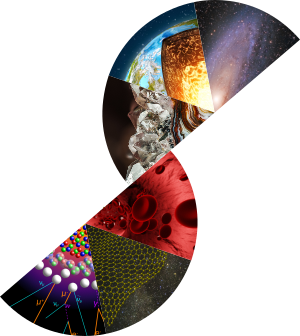Material studies can reveal ancient objects' manufacturing processes and raw materials provenance. The expertise of artworks is driven by curators and heritage specialists. Some questions cannot be answered only by visual observation and literature knowledge and it is usual to call scientific laboratories, which developed analytical methodologies to probe objects. Data are extracted by preserving object integrity without taking samples and with no risk of damage to unique, fragile, and valuable pieces. For this purpose, we use protons, and alpha beams delivered by an accelerator. High energy particles induce X-ray emission (HE-PIXE) in the target and the study of the X-ray spectrum informs about the chemical elements present in the alloy [1]. To probe the material in-depth, we use
|
Cultural heritage material analysis by high-energy ion beams
1 : Laboratoire de physique subatomique et des technologies associées
Institut National de Physique Nucléaire et de Physique des Particules du CNRS, Centre National de la Recherche Scientifique, IMT Atlantique, Nantes université - UFR des Sciences et des Techniques
2 : Laboratoire de physique subatomique et des technologies associées
Université de Nantes - UFR des Sciences et des Techniques, Centre National de la Recherche Scientifique, Institut National de Physique Nucléaire et de Physique des Particules du CNRS, IMT Atlantique Bretagne-Pays de la Loire
3 : GIP ARRONAX [Nantes]
Université de Nantes
4 : Arc'Antique
Département de Loire-Atlantique
5 : Grand Patrimoine de Loire-Atlantique
Département de Loire-Atlantique
6 : Institut des Matériaux Jean Rouxel
Institut de Chimie du CNRS, Centre National de la Recherche Scientifique, Nantes université - UFR des Sciences et des Techniques, Nantes Université - Ecole Polytechnique de l'Université de Nantes
|

 PDF version
PDF version
